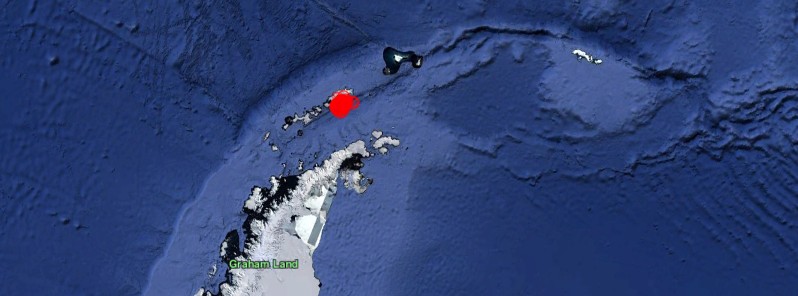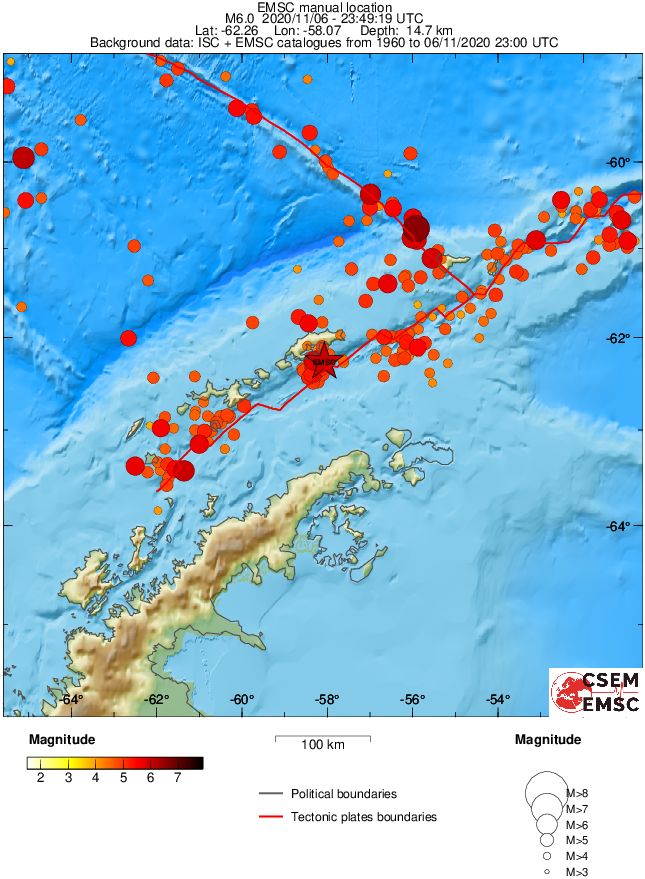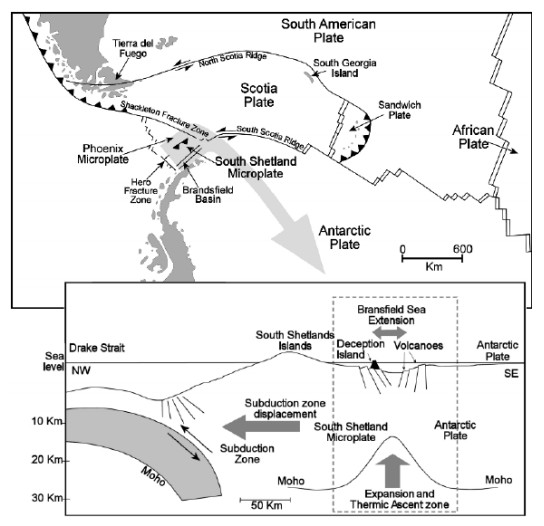Antarctica hit by 30 000 earthquakes in 3 months

More than 30 000 earthquakes have been registered in the Bransfield Strait, an ocean channel between the South Shetland Islands and the Antarctic Peninsula, since the end of August 2020, according to the University of Chile. The strait is now expanding 15 cm (6 inches) per year from the Antarctic Peninsula, nearly 20 times faster than before.
The strongest earthquake in the sequence was M6.0 at a depth of 15 km (9 miles) at 23:49 UTC on November 6.

According to the National Seismological Center at the University of Chile, the swarm is centered in the Bransfield Strait, a 96 km (60 miles) ocean channel between the South Shetland Islands and the Antarctic Peninsula.
The center said several tectonic plates and microplates meet in this area, leading to frequent rumbling, but the past three months have been unusual.
Most of the seismicity is concentrated at the beginning of the sequence, mainly during the month of September, with more than a thousand earthquakes a day, the center said, as reported by Reuters.
Due to these frequent earthquakes, the strait is now expanding from the Antarctic Peninsula about 15 cm (6 inches) per year, nearly 20 times faster than before (7 to 8 mm (0.30 inch) per year).

Image credit: Berricoso et al. (2008)
Featured image: Location of earthquakes in Bransfield Strait, 2020. Credit: EMSC

The Antarctic continent is used to be the largest earthquake-free area on the Earth, only a few earthquakes are registered by the Worldwide Standardized Seismograph Network (WWSSN). Now, look at the massive increase of seismic activity in Antarctica. This is of course has to do with the rapid pole shift and the colossal energy build up at the core of the Earth that will be released mainly, through hotspot locations and major earthquake zones worldwide